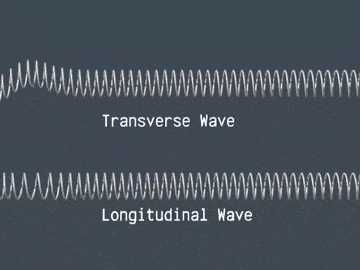WAVES


Travelling wave – A disturbance that propagates energy without transferring physical material.
-
Mechanical – Propagates its disturbance through a medium by an oscillating movement of the particles in the medium.
-
Electromagnetic – Propagates as a transverse wave through a medium or a vacuum by oscillations of coupled, time-varying electric and magnetic fields.
Transverse waves – Medium of particles propagate perpendicular to the direction of the wave and propagation of energy.
Longitudinal waves – The medium of particles propagates parallel to the direction of the wave and propagation of energy.
Time period – Time required for one wave to pass through a point.
Frequency – Number of oscillations through a point in one second.
Wave length – The consecutive distance from one crest to a trough.





Wavefront - A surface that travels with a wave and is perpendicular to the direction in which the wave travels.
Ray - A line showing the direction in which a wave transfers energy an is perpendicular to a wavefront.
Huygen's Principle
Brewster's Law
Every point on a wavefront is a source of wavelets. These wavelets spread out in a forward direction, at the same speed as the source wave. The new wavefront is a line tangent to all the wavelets.

- The angle between the reflected and refracted ray is 90 degrees.
- The value of n = tanA, where A is the angle of incidence.
- Reflected light will be plane polarized (if plane is horizontal, light ray will be horizontal, if plane is vertical, light ray will be vertical)

Malu's Law
The relationship for the intensity of light going out from one analyzer is:
- If angle of slit changes, the energy and intensity will continue to decrease until 0.
- If angle is 90, intensity will be 0, as cos90 is 0.
- If angle is 0, intensity will be max, as cos0 is 1.




